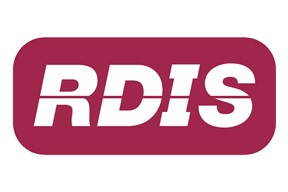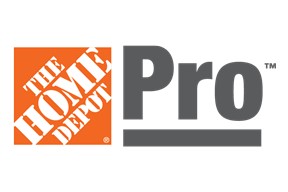Welcoming pets is good for business when everyone knows the rules.
For many renters, pets are more than animals. From playful pups to laid-back cats, they’re beloved members of the family. As more renters adopt pets, the demand for pet-friendly rentals is skyrocketing. This creates both an opportunity and a challenge for renters, property owners, and property managers: How can rental properties be welcoming environments for pet owners while still protecting the property itself?
Whether you’re a landlord, a tenant, or someone managing rental homes, navigating pet policies with clarity and cooperation is key. Here are some tips on how to make it work for everyone involved.
A Growing Trend
According to recent data published by Forbes, pet ownership is at an all-time high. In fact, nearly 70% of U.S. households have at least one pet. That’s up from just 56% in 1988. And 96% of pet parents say their pets are a vital part of their lives and considered members of their families. With that number in mind, consider how many of these pet parents are renters. So many that “pet-friendly” is one of the most searched-for terms on rental platforms today.
Why does this matter? Simple: Rental homes that allow pets open the door to a much broader pool of tenants, often leading to shorter vacancies and longer lease terms.
But without the right policies and systems in place, it can also mean potential problems, ranging from property damage to disputes. The good news is that, with the right preparation and follow-through, both property owners and renters can enjoy the benefits of a pet-friendly rental property and avoid many of the common pitfalls.
Tips for Landlords and Property Managers
Here is a list of some of the best practices for property owners and managers of pet-friendly rentals.
Create a Clear Pet Policy. Before you do anything else, get it in writing! A well-defined pet policy sets expectations and keeps everyone on the same page. Be sure your policy outlines what types of pets are allowed, including size and breed restrictions. Specify rules about noise, outdoor access, waste disposal, and where pets are (or aren’t) allowed on the property. Are there limits on the number of pets per unit? Make it clear in your lease documents.
Require a Pet Agreement or Addendum. It can be hard to fit all the details of your pet policy in the lease itself. Consider adding a detailed pet agreement, or addendum, that outlines your pet policy in specific terms. Include consequences for not following the pet agreement as it is written—and the actions you may take as a result. This will help keep all parties accountable.
Charge Fair Pet Fees. Pet-friendly doesn’t mean free-for-all. But if you do plan to charge a pet fee, keep it reasonable. For example, consider charging either a refundable pet deposit and monthly pet rent (above the regular rental rate) or a one-time pet fee, but not both. Pet fees help cover wear and tear or potential cleanup costs.
Ensure your fees comply with fair housing laws. Service animals and emotional support animals (ESAs) are not considered pets under federal law and cannot be charged pet-related fees.
Protect Your Property. When it comes to having a pet-friendly rental property, a few small precautions can go a long way. For example, ask your renters for references from prior landlords who’ve seen the pet in action. Some property managers even conduct “pet interviews” to meet the animal beforehand and assess temperament. Beyond assessing the renter and the pet, be sure to require your renters to carry insurance that includes pet liability coverage. This can help protect you and your tenant if the pet causes property damage.
Finally, it’s important to prepare your property for pets by choosing pet-friendly materials during renovations. For example, opting for vinyl or tile flooring instead of carpet is a smart way to go. Materials that are durable, easy to clean, and better suited to paws are ideal for a truly pet-friendly rental home.
Best Practices for Renters with Pets
It’s also important to note that your tenants have responsibilities when it comes to their pets. As a property owner/landlord, you can offer prospective tenants the following list of best practices to ensure they have a successful relationship with you. If you have a pet-friendly policy, you can even post this set of guidelines with your online property listings.
Be Honest from the Start. Always disclose your pet when applying. Trying to “sneak in” a pet could lead to a lease violation and even eviction. Landlords appreciate honesty and are more likely to work with tenants who are upfront with us.
Be Prepared to Provide Pet References. Yes, pet references are a thing! If your previous landlord or dog walker can vouch for your pet’s good behavior, that’s a huge plus. Include them with your rental application along with basic pet info like breed, age, vaccination status, and any training certificates.
Be a Responsible Pet Owner. When thinking about the day-to-day part of living in the rental home, remember that the basics matter: Clean up after your pet, manage barking (for dogs), and make sure your pet isn’t disturbing neighbors. Be sure to keep your pet up to date on vaccines and flea/tick treatments. And if you have a dog, ensure it gets regular exercise and training. A well-exercised pup is a well-behaved pup!
Communicate Early and Often. Finally, if your pet does cause any issues or if anything about your pet arrangements changes, it’s important to talk to your property manager ahead of time. A little communication goes a long way in staying on good terms and preventing misunderstandings—or worse.
Shared Goals and Communication
At the end of the day, the goal of pet-friendly rentals is a simple one: happy tenants, respectful pets, and well-maintained properties. For best results, both property managers and renters should participate in and encourage cooperation and open lines of communication. Property managers can ask for pet résumés or hold meet-and-greets. Tenants should feel comfortable asking questions about rules or requesting permission for small pet-related changes, like installing a pet gate.
Ultimately, when both sides commit to a respectful partnership, pet-friendly rentals can be a huge win for everyone.
Real Property Management Has Your Back
Pet-friendly properties hold many advantages for both property managers and renters . They attract loyal tenants who tend to treat their homes with care. And with more renters than ever looking for a home for themselves and their pets, now is the perfect time to embrace the trend.
Whether you’re a property owner looking to implement a pet policy, a renter searching for a pet-friendly home, or a property manager seeking new opportunities, your local Real Property Management office is here to help! Contact us today for expert advice and stress-free solutions tailored to your current situation and needs.
























0 Comments